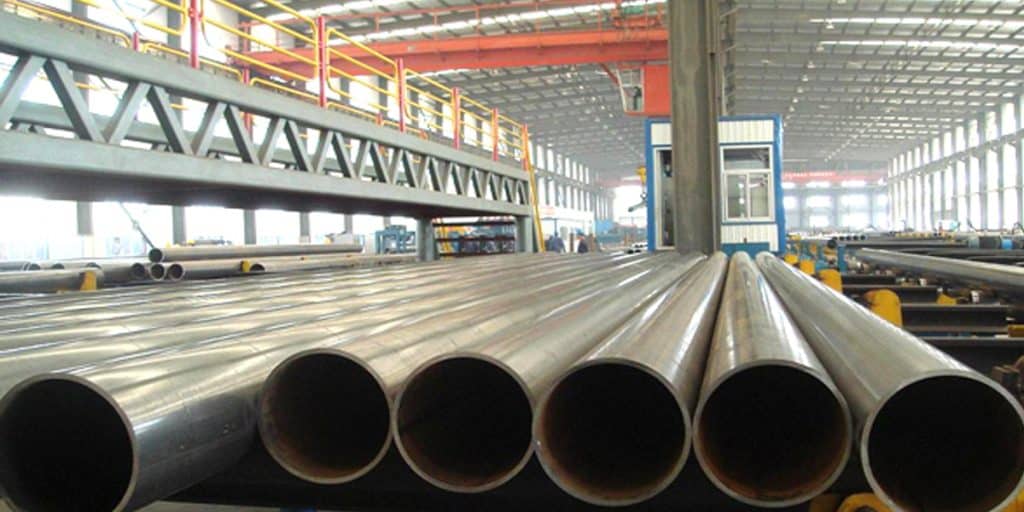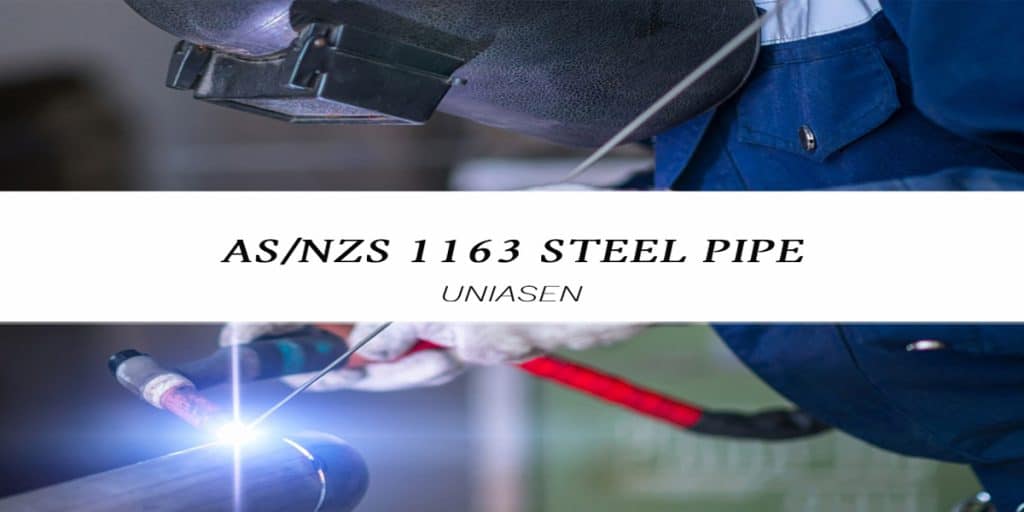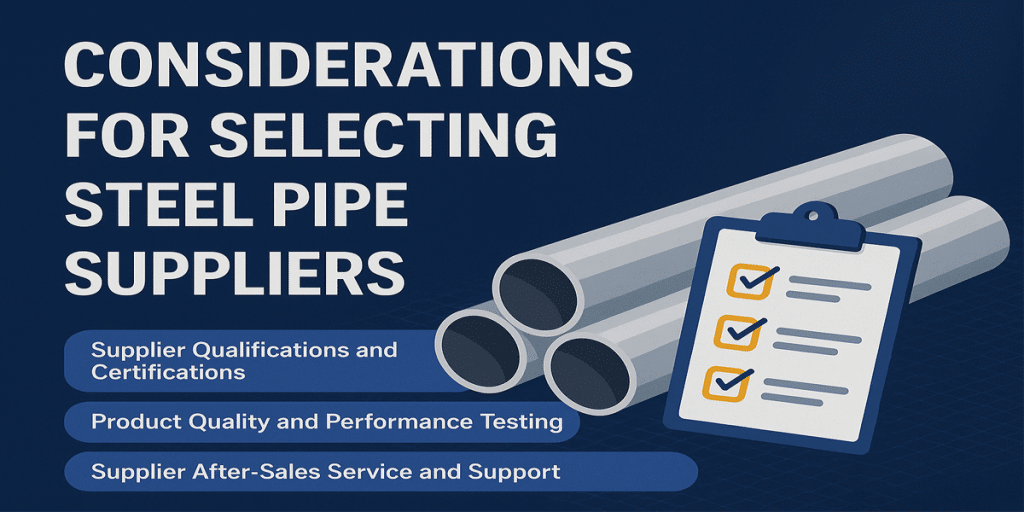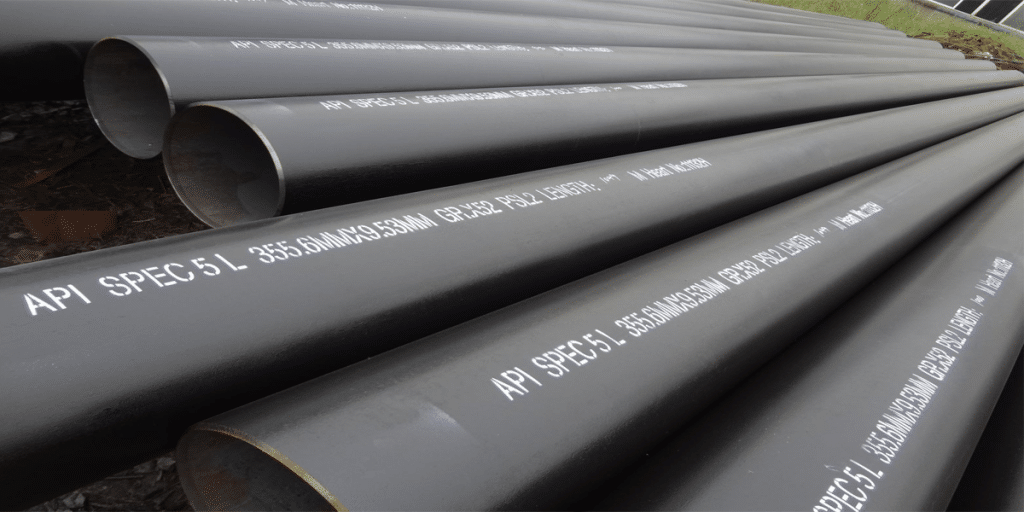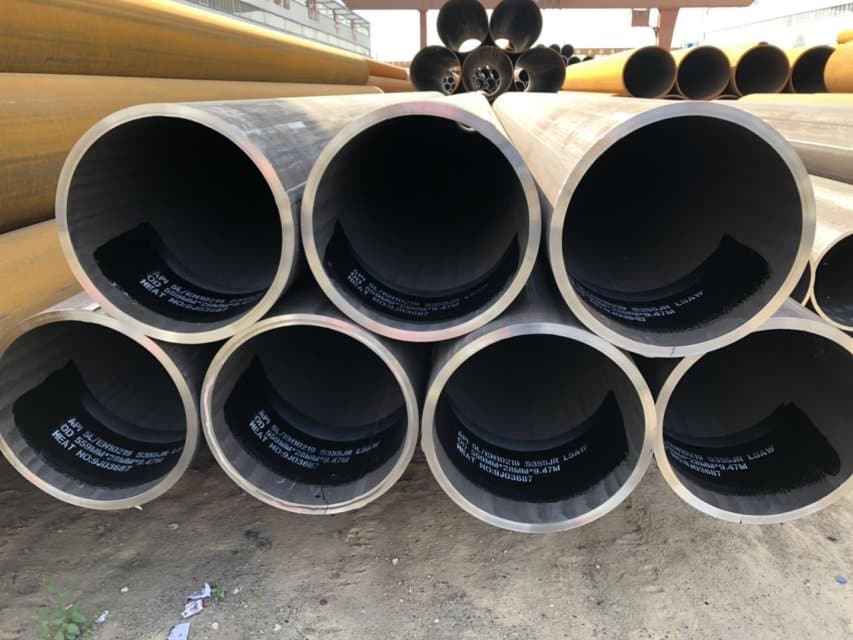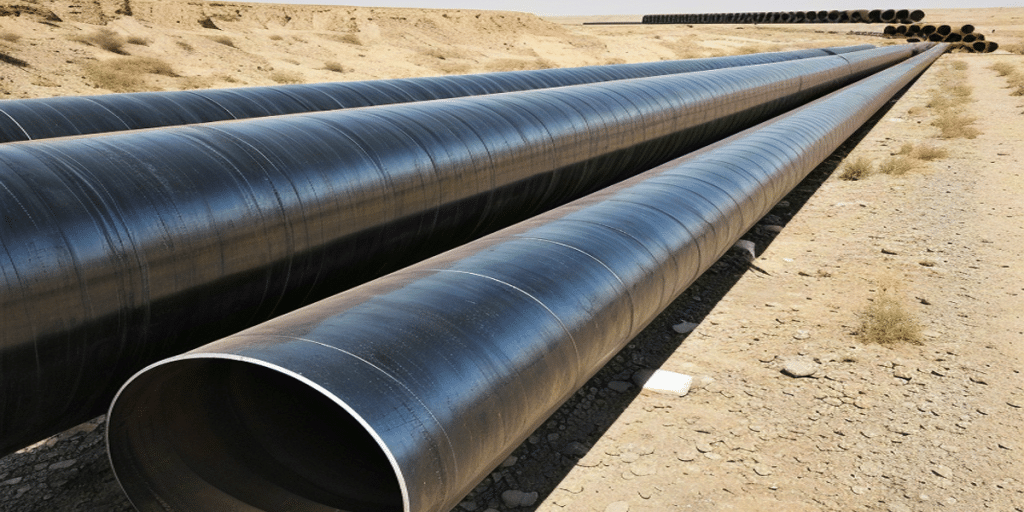For oil and gas transmission main lines requiring long-distance transportation, high pressure/high strength, or strict material control and grades (e.g., high-grade X-series, PSL2), API 5L is typically the more suitable choice. If the application involves general mechanical use, water supply and drainage, low/medium-pressure pipelines, or structural purposes—where strict requirements for chemical composition and high-grade strength are not necessary—ASTM A53 can serve as a more cost-effective alternative. This conclusion is based on differences between the two specifications in terms of application scope, product grades, and testing/qualification requirements.
What Are ASTM A53 and API 5L?
- ASTM A53/A53M: Published by ASTM International, it covers carbon steel black pipes and hot-dip galvanized pipes (welded and seamless), commonly used for mechanical and pressure applications. Its specifications range from NPS 1/8 to NPS 26. The standard defines Types (F/E/S) and Grades (A/B).
- API 5L: Developed by the American Petroleum Institute (API), it is specifically designed for oil and gas transmission line pipes. It includes two product levels (PSL1 and PSL2) and covers grades from low-strength (e.g., L245) to high-strength X-series (X42–X100), making it widely used in long-distance transmission and oil and gas projects.
Key Differences at a Glance (Core Factors Affecting Selection)
- Application Scenarios and Certification Requirements
- API 5L is explicitly intended for oil and gas transmission, including appendices and recommendations for offshore/sour service conditions. It is the industry’s preferred specification for international oil and gas projects.
- ASTM A53 is more oriented toward general mechanical and low/medium-pressure applications (municipal, construction, and general industrial pipelines).
- Grades and Mechanical Properties
- ASTM A53 only defines grades such as Grade A and Grade B (suitable for general strength requirements). API 5L offers a broader range of grades (including X-series for high-strength needs). Therefore, API 5L provides more options for scenarios requiring higher safety margins, such as design pressure, burial depth, and stress verification.
- Product Levels (PSL1 vs. PSL2)
- API 5L PSL2 imposes stricter requirements on chemical composition, mechanical properties, and non-destructive testing (NDT) than PSL1. It is suitable for critical transmission pipelines and projects with strict acceptance criteria.
Selection Comparison Table
| Comparison Item | ASTM A53 | API 5L |
| Primary Applications | Mechanical use, general pressure services, water supply/drainage, construction | Oil and gas transmission main lines (long-distance/high-pressure/high-strength) |
| Grades/Ranges | Grade A / B; Types F/E/S (welded/seamless) | PSL1 / PSL2; L-series & X-series (X42–X100) |
| Material Control | Relatively lenient | More stringent (chemistry, yield/tensile strength, low-temperature impact, etc.) |
| NDT & Testing | Basic requirements (per order) | Stricter NDT, mechanical testing, and traceability requirements |
| Application Advice | Low/medium pressure, short-distance, or structural use | High pressure, long-distance, harsh conditions (including offshore/sour service) |
Source: ASTM and API standard specifications, and industry technical comparisons.
How to Make the Right Selection for Your Oil and Gas Project?
- Clarify operating conditions: Define design pressure, transmission medium (including H₂S/CO₂ content), temperature, burial depth, and external forces (earthquakes, loads). For high-pressure/long-distance transmission or sour/offshore conditions, prioritize API 5L (PSL2 or high-grade X-series).
- Verify engineering specifications and bidding requirements: Owners/regulatory authorities often specify API 5L in contracts (especially for international oil and gas projects), so compliance is a top priority.
- Economic evaluation: For auxiliary, on-site, or low-pressure branch lines with tight budgets, ASTM A53 can be used if safety requirements are met. However, ensure the selected grade and testing meet application needs.
- Samples and third-party inspection: For critical projects, request third-party witnessing (e.g., MTC, NDT reports) and clearly specify PSL/Grade/sampling plans in the contract.
Why Choose LONGMA as Your Pipe Supply Partner?
With over 20 years of pipe manufacturing experience, LONGMA specializes in producing ERW round pipes and large-diameter LSAW pipes, and provides one-stop solutions for oil and gas project supporting needs:
- Delivery compliance with specifications such as ASTM A53 and API 5L (PSL1/PSL2);
- Two major production lines (ERW/LSAW) to supply a variety of products—from A53 Grade B to API X-series—per project requirements;
- A comprehensive quality system (raw material testing, in-line NDT, delivery MTC, and support for third-party inspection);
- Project-level services: engineering technical support, customized anti-corrosion/linings, global logistics, and after-sales follow-up.
Need a project quotation or technical documents (MTC, weld inspection reports, samples)? Contact our project team—we will provide customized pipe selection advice and optimal supply solutions based on your operating conditions.
Note: Descriptions of standard application scopes, grades, and product levels in this article are based on official ASTM/API specifications and industry materials. For specific project selection, refer to contract technical specifications and engineering calculation results. Key references: ASTM A53 Standard Specifications, API 5L Specifications, and industry technical comparison materials.

